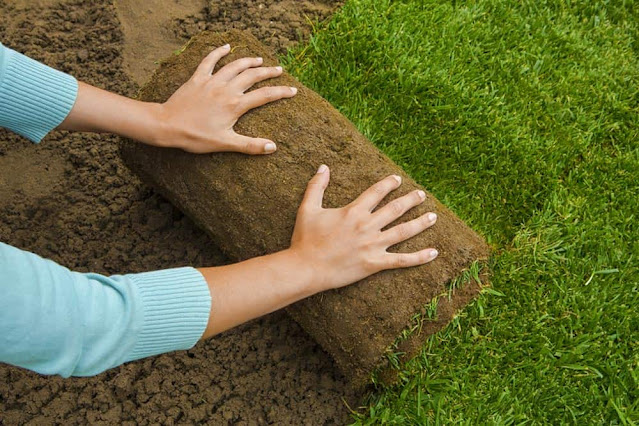Liverpool, a city steeped in history and culture, is undergoing a green transformation that is not only enhancing its aesthetics but also contributing to its environmental sustainability. One of the key elements of this transformation is the meticulous art of turf laying. Turf laying in Liverpool is not merely a process of placing rolls of grass onto the ground; it's a science that involves careful planning, soil preparation, and precise execution. This article delves into the world of turf laying in Liverpool, exploring the techniques employed and the benefits reaped.
The Process of Turf Laying
Turf laying is a multi-step process that involves more than just unrolling and laying down grass. The process begins with proper site evaluation and planning. Factors such as soil type, drainage, sunlight exposure, and intended usage are carefully considered to ensure the turf's long-term success.
Site Preparation:
Before the turf even arrives, the site must be properly prepared. This involves removing any existing vegetation, weeds, and debris. The soil is then graded and leveled to ensure a smooth surface for the turf.
Soil Preparation:
The soil's quality and structure play a crucial role in the health of the turf. Soil testing is often conducted to determine its pH levels and nutrient content. Based on the results, soil amendments may be added to improve its quality. Proper drainage is also addressed during this stage to prevent waterlogging.
Turf Selection:
Choosing the right type of grass for the specific location is essential. Factors such as climate, soil type, and intended usage dictate the choice of turf. In Liverpool, popular grass varieties include Kentucky Bluegrass, Perennial Ryegrass, and Fine Fescue.
Turf Installation:
Once the site and soil are ready, the turf rolls are carefully laid out in a staggered pattern, much like laying bricks. Care is taken to avoid overlapping or leaving gaps between the rolls. Proper alignment is crucial to achieving a seamless and uniform look.
Watering and Maintenance:
Immediately after installation, the turf is thoroughly watered to help it establish roots in the new soil. Regular watering, mowing, and fertilization are vital for the turf's health and growth. In Liverpool's climate, a balance between moisture and drainage is crucial for the longevity of the turf.
Benefits of Turf Laying in Liverpool
The revitalization of Liverpool's landscape through turf laying brings forth a myriad of benefits:
Enhanced Aesthetics:
Turf provides an instant transformation, turning barren patches of land into lush, green spaces. The visual appeal contributes to the overall beauty of the cityscape, creating inviting environments for residents and visitors alike.
Improved Air Quality:
Grass absorbs carbon dioxide and releases oxygen, contributing to cleaner air in urban areas. Turf also captures dust and particulate matter, improving air quality around the laid areas.
Temperature Regulation:
The cooling effect of grass helps regulate temperatures, especially in urban heat islands. In Liverpool's warm summers, green spaces can provide relief from the heat.
Soil Erosion Control:
Turf acts as a natural barrier against soil erosion, preventing rainwater from washing away valuable topsoil. This is particularly important in areas prone to heavy rainfall, like Liverpool.
Recreational Opportunities:
Well-maintained turf areas offer spaces for recreational activities, from picnics to sports, fostering community engagement and physical well-being.
Conclusion
A transformation into a more sustainable and beautiful city, the art and science of turf laying in Liverpool play a crucial role. Beyond its visual appeal, turf contributes to environmental health, temperature regulation, and community engagement. With meticulous planning, precise execution, and ongoing maintenance, turf laying is not just about grass; it's about creating a vibrant, inviting, and sustainable urban landscape for the people of Liverpool to enjoy for years to come.

Comments
Post a Comment